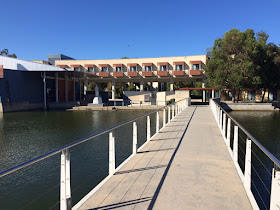 |
| Cities everywhere have Infernos - usually invisible from downtown towers |
The quote above is from a 14th Century poem by Dante in which the first part is called Inferno, a hell in which the author makes his way past unimaginable, underworld horrors towards salvation.
In urban parlance Dante’s Inferno is an allegory for skid rows, ghettos, and high crime neighborhoods where drug dealers and gang bangers rule like medieval war lords.
I spent the past week in a pretty rough neighborhood – it doesn’t matter where since it could be any large city. I was working with an amazing community group to transform their neighborhood into something better.
 |
| Dilapidated housing, drug addicts, high crime - the modern Inferno |
Part of our week included visiting one portion of that neighborhood, for all intents an Inferno of open-air drug markets, among the worst anywhere. It is always sobering to visit such places, though sober isn’t the right word to describe the hundreds of addicts who call it home.
Surely a place strewn with heroin syringes, dense with garbage and litter, and blighted with the effluent of a drug shooting gallery is not a place for children. Yet there they were, coming home from school, walking past their drug dealing older brothers hanging on the corners of dilapidated sidewalks, waiting for inevitable customers from both far and near.
 |
| Children do not belong here, yet there they were |
Unlike other parts of the neighborhood, residents in the Inferno barely eke out a living. Many are afraid but haven’t the means to leave. Crime is rampant, but rents are cheap.
RESIDENTS
To the emergency doctors, beat cops, paramedics, social workers and community development specialists who work in such places, Infernos are a workplace where they learn the full measure of frustration.
To the addicts, homeless, and poverty-stricken trapped in the deprivation and disparity that replaces life with survival, Infernos are the prisons that shame the modern democracy.
To the drug dealers, their handlers, traffickers and their cartel overlords, and all the criminal parasites who pocket the urban fabric like the boils of the Black Plague, Infernos are their retail store and, in some ways, their prison too!
 |
| Waiting, very carefully, for clandestine photos away from ever-present drug dealers |
Traveling through Inferno, Dante discovers that sin is a product of desire – an irony here given the preponderance of drug addiction. But eventually, through hard work and a wise, caring guide, Dante is led out of Inferno.
The labor of my colleagues this week was inspiring. Their goal is to guide their community with wisdom, courage and hard work, away from Inferno and toward something better. They live the words written by Dante 700 years ago; “and we came forth to contemplate the stars.”





